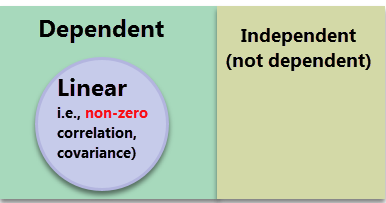kevolution
Member
Why is zero covariance imply zero correlation but not vice versa? If we go by the formula covariance(p,M) = correlation(p,M) * sigma(p) / sigma(M), wouldn't zero correlation mean zero covariance as well?
 but something like this:
but something like this:


Hi,
I would like to clarify the difference between co-variance formulas, which are mention in page 27 as follows:
population co-variance:

and this co-variance formula which is extracted from correlation formula

I mean in first equation, we have divided by N and there is summation sign, however in second formula neither N nor summation sign exist.
Thank You